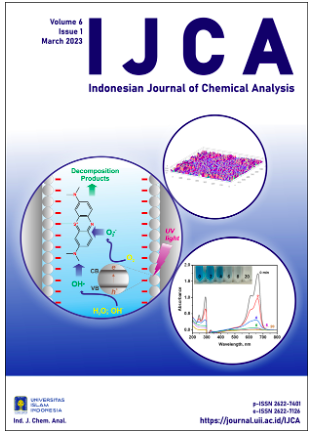Main Article Content
Abstract
This work presents the successfully of TiO2 nanostructure synthesis using manual grinding combined hydrothermal method for photocatalyst. XRD confirmed that TiO2 was arranged by anatase and rutile phase with crystal size of 18.54 nm. Characterization of digital microscope shows the spread of catalyst on the glass tube surface, which can be observed furthermore using interactive 3D surface plot. Band gap energy determination from UV-Vis spectroscopy scanning shows the minimum energy that is required to facilitate electron-hole generated. In 20 min of irradiation, TiO2 existence can completely decompose MB (100%) that can be presented by TiO2 absence. Degradation of MB is higher effective in acidic condition which optimum pH of 5. Using first order reaction, glass tube-coated TiO2 has rate constant of 0.2102 min-1, 1.5 times faster than bare glass tube. This enhancement proves that the designed reactor has good prospect for organic pollutant treatment. Moreover, compared with other reported study, this system provides relatively more effective of MB photodegradation.
Keywords
Article Details
Copyright (c) 2023 Indonesian Journal of Chemical Analysis (IJCA)

This work is licensed under a Creative Commons Attribution-ShareAlike 4.0 International License.
You are free to:
Share — copy and redistribute the material in any medium or format
Adapt — remix, transform, and build upon the material for any purpose, even commercially
Under the following terms:
Attribution — You must give appropriate credit, provide a link to the license, and indicate if changes were made. You may do so in any reasonable manner, but not in any way that suggests the licensor endorses you or your use.
ShareAlike — If you remix, transform, or build upon the material, you must distribute your contributions under the same license as the original
No additional restrictions — You may not apply legal terms or technological measures that legally restrict others from doing anything the license permits




